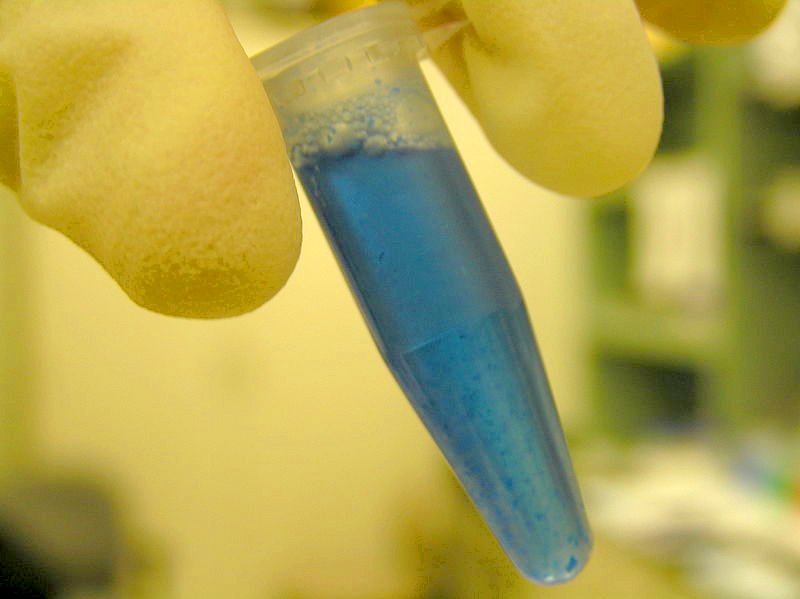Scientists have discovered that a dye used to colour food can also help to heal spinal injuries. Writing in this week's PNAS, a team at the University of Rochester led by Maiken Nedergaard describe how a dose of Brilliant Blue G, an analogue of the food dye FD&C blue dye No. 1, can help rats with cord injuries to recover better than controls. The effect, say the team, is down to the ability of the dye to block a class of nerve transmitter receptors known as P2X7 receptors, which are present on spinal nerves and respond to chemical signals called purines, including one called ATP. Purines are released in large abundance during spinal injuries.
 When they lock onto P2X7 receptors a large pore is formed on the target nerve cell which allows large amounts of calcium and other potentially toxic substances to enter and kill the cell. This contributes significantly to what is known as "secondary damage" that often follows an injury and is responsible subsequently for a significant disability. The team had previously identified a chemical capable of blocking P2X7receptors, OxATP, which had shown promise in reducing spinal cord injury but it was highly toxic to other tissues, ruling out any therapeutic role for the agent. But this prompted the team to look for other substances capable of doing the same job, leading them to Brilliant Blue G (BBG). To test its effectiveness the team subjected experimental rats to spinal cord injuries.
When they lock onto P2X7 receptors a large pore is formed on the target nerve cell which allows large amounts of calcium and other potentially toxic substances to enter and kill the cell. This contributes significantly to what is known as "secondary damage" that often follows an injury and is responsible subsequently for a significant disability. The team had previously identified a chemical capable of blocking P2X7receptors, OxATP, which had shown promise in reducing spinal cord injury but it was highly toxic to other tissues, ruling out any therapeutic role for the agent. But this prompted the team to look for other substances capable of doing the same job, leading them to Brilliant Blue G (BBG). To test its effectiveness the team subjected experimental rats to spinal cord injuries.
Some of the animals received BBG whilst others were left untreated as controls. The researchers found that the BBG-treated animals began to recover sooner than the controls and regained superior function subsequently. And when the team compared the spinal cord tissue from the animals they found that the treated rats had significantly less secondary spinal tissue loss than the controls. The team point out that given the proven safety record of BBG this strategy could make a significant contribution to the management of spinal and other central nervous system injuries. At present, they point out, steroids like methyl prednisolone are about the best that doctors can offer a spinal injury patient. Steroids have modest benefit and work by reducing inflammation at the injury site but there is a delay before they begin to work. The effect of BBG is instantaneous, say the scientists, so it could have much to offer...
- Previous Raindrop sizes explained
- Next Malaria Tolerance Infant Death Risk









Comments
Add a comment